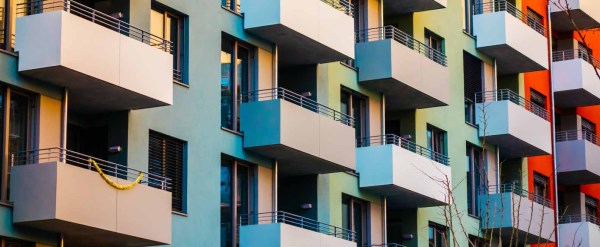Strata of Origin VIC vs. NSW: Policies, Polls and Priorities

New South Wales (NSW) and Victoria are the two states with the highest percentages and total number of people living in strata.
Both NSW (March 2023) and Victoria (November 2022) face state elections within six months of each other, and significantly, only within six months of the May 2022 Federal Election.
It has been a busy time for SCA preparing and executing these campaigns and trying to get strata on the agenda nationally and in Victoria and NSW. Many similarities in issues exist between all three campaigns, but especially the two state-based campaigns.
We examine here in greater detail two of the common and pressing policy issues in each state – sustainability and building quality – and place them within the context of the upcoming election battles.
The Electoral Battleground
In Victoria, while nothing is ever certain in politics, all polling currently suggests a return for the Andrews Labor Government, originally elected in 2014, which is predicted to win another four-year term in government until 2026.
Whether a hypothetical return for the Andrews Government takes the form of a majority or minority in the Legislative Assembly (lower house), remains to be seen; meanwhile, the Coalition, led by returning leader Matthew Guy, are surely keen to bridge perception gaps between them and the government, as observed in recent opinion polls.
Roy Morgan SMS polling conducted in August 2022 of approximately 1,500 Victorian voters indicates a 60.5% to 39.5% lead by the ALP against the Coalition on a two-partypreferred basis. However, primary support for both parties has fallen, to 40.5% for the ALP (a decrease of 3 percentage points), and 27.5% for the Coalition (a decrease of 2 percentage points) respectively.
The key issues making regular appearances in the media ahead of the Victorian election on 26 November include public hospital capacity, ambulance ramping and response times, as well as planned and ongoing public transport and infrastructure projects.
In NSW the outcome of an upcoming election due in March 2023 is less certain at the time of writing, with a multitude of factors affecting the state of play for the incumbent Perrottet Coalition Government, seeking a fourth term in government, after 12 years in power under three successive Premiers.
The ALP opposition, under the new leadership of Chris Minns, are seeking to retake government after a long period in the electoral wilderness, focusing their attacks on the Coalition over cost of living, industrial action in the public transport sector, and investigations undertaken by the Independent Commission Against Corruption (ICAC).
A Guardian Essential Poll taken in July 2022 of 700 voters indicates the Coalition’s primary support currently sits at 37%, while Labor’s remains at 33%, unchanged from the 2019 election – however, if these results were replicated at an election held today, these would translate to a 4.5% swing against the Perrottet Government, already in minority status as of 2022.
Building Defects, Building/Property Sector Reform and Cladding
In NSW a comprehensive support package for rectification of flammable cladding, Project Remediate, is currently underway as of August 2022, offering interest-free loans to owners corporations in multi-dwelling properties over a period of 10 years to retrofit alternative, safer cladding materials.
Despite some significant turmoil, the formation of a Property Services Commissioner and Building
Commissioner highlights a focus by government on increasing the confidence of consumers buying into, and living in strata. This has been broadly welcomed by stakeholders within the strata industry, and within consumer rights circles.
In Victoria, the Cladding Safety Victoria (CSV) program of rectification support for apartment buildings has continued in its mission, with 154 apartment buildings having had cladding materials removed and replaced, with 54 underway as of June 2022.
The Victorian Government has also committed to reviews led by expert panels concerning the building sector, property market, and domestic building warranty insurance scheme, respectively, throughout 2021 and 2022.
Sustainability in Strata and the Built Environment
Both the Victorian and NSW Governments, respectively, have placed even greater stock into leading Australia’s ongoing transition towards a decarbonised, circular economy. Meeting ambitious emissions reductions, and net zero pathways by the year 2050 at the latest, through a focus on households and the built environment are central to these goals.
In Victoria, the government committed to the implementation of an effective ban of embedded networks in newly built apartment buildings at the 2018 election, with a lengthy transition period to 2026-27 for legacy networks to comply with new regulations, including a revised minimum of 5% on-site renewable energy generation as part of a 100% renewable sourcing quota.
The Victorian Government has also launched several sustainability packages targeted at households including the Solar Homes Program, Zero Emission Vehicle subsidy and Heating and Cooling Upgrades – the specific targeting of these programs to strata properties is not purposely
In New South Wales, the government has recently announced funding support towards the installation of electric vehicle (EV) charging infrastructure in 100 medium and large apartment complexes to the tune of $10 million, in recognition of the impending and rapid uptake of EVs by consumers over the coming decade – approximately 20% of EVs currently purchased in Australia are from consumers living in strata.
View Comments
(0)